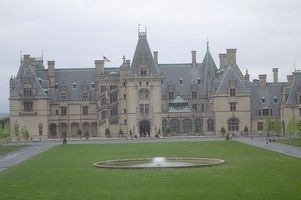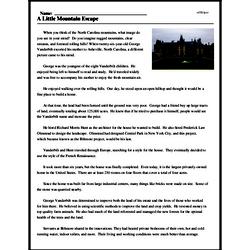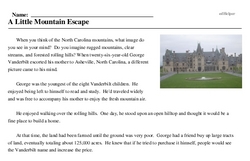A Little Mountain Escape
When you think of the North Carolina mountains, what image do you see in your mind? Do you imagine rugged mountains, clear streams, and forested rolling hills? When twenty-six-year-old George Vanderbilt escorted his mother to Asheville, North Carolina, a different picture came to his mind.
George was the youngest of the eight Vanderbilt children. He enjoyed being left to himself to read and study. He'd traveled widely and was free to accompany his mother to enjoy the fresh mountain air.
He enjoyed walking over the rolling hills. One day, he stood upon an open hilltop and thought it would be a fine place to build a home.
At that time, the land had been farmed until the ground was very poor. George had a friend buy up large tracts of land, eventually totaling about 125,000 acres. He knew that if he tried to purchase it himself, people would see the Vanderbilt name and increase the price.
He hired Richard Morris Hunt as the architect for the house he wanted to build. He also hired Frederick Law Olmstead to design the landscape. Olmstead had designed Central Park in New York City, and this project, which became known as the Biltmore project, would be his last.
Vanderbilt and Hunt traveled through Europe, searching for a style for the house. They eventually decided to use the style of the French Renaissance.
It took more than six years, but the house was finally completed. Even today, it is the largest privately-owned home in the United States. There are at least 250 rooms on four floors that cover a total of four acres.
Since the home was built far from large industrial centers, many things like bricks were made on site. Some of the stone was quarried nearby.
George Vanderbilt was determined to improve both the land of his estate and the lives of those who worked for him there. He believed in using scientific methods to improve the land and crop yields. He invested money in top quality farm animals. He also had much of the land reforested and managed the new forests for the optimal health of the trees and the land.




